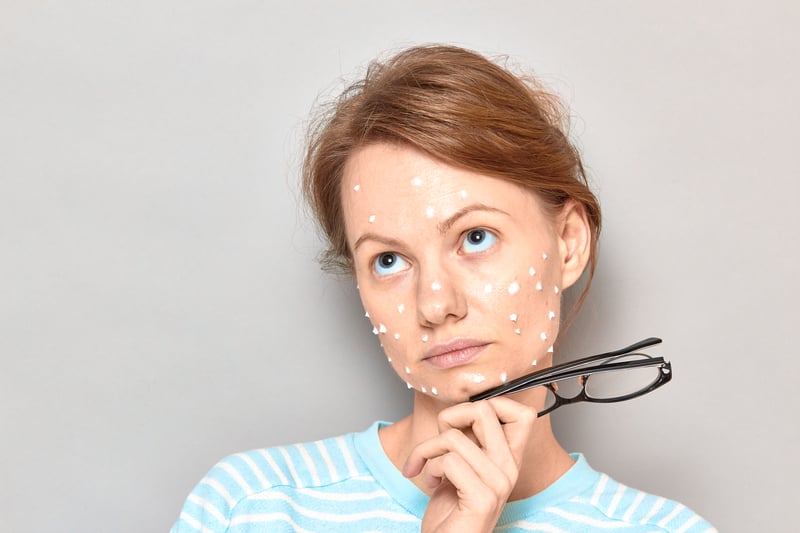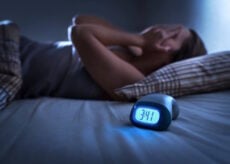13 Common Skincare Mistakes You Need to Stop Making

No matter what your age, skincare is important. And in the “beauty world,” it’s not an exaggeration to say people are obsessed. It’s the first thing others see, and it goes through dozens of changes, depending on your age, the season, and the climate. Plus, it’s so easy to make skincare mistakes that can irritate the skin, increase inflammation, cause breakouts, and *gasp* increase the signs of aging.
Skin health, however, isn’t just about looking “younger” or firmer or reducing irritation. Skin is the body’s largest organ. So, if you want to stay healthy (of course!), then you’ll want to defend this protective layer and provide the TLC it needs.
Here are the top skincare mistakes you’re probably making and, more importantly, what to do to fix them.
13 Skincare Mistakes to Avoid
1. Washing Your Face with Body Soap
Soap is convenient, often inexpensive, and oh-so-easy to just grab and go, especially when compared to quality face creams and gel washes. But if you’re using it on your face, neck, and chest, you could be doing more harm than good. This is because bar soap strips away water and oils, which can lead to dead skin cell buildup and dryness.
Can’t you just apply moisturizer to overcome the damage? Not according to dermatologists. Even if you exfoliate your skin and apply moisturizer, the use of the bar of soap reverses the benefits of those products.
Investing in a separate quality skin cleanser is well worth the money when it comes to promoting skin health.
While you’re cleansing your skin, watch the water temperature as well. Water that’s too hot can damage the skin as it strips away natural oils and inflames the skin. Use tepid or lukewarm water instead.
2. Cleaning Only Once (If You Wear Makeup)
Our facial skin is exposed to the elements, pollution, dirt, and grime. And then many of us add makeup to the mix. If that sounds like you, one cleansing likely isn’t enough. Instead, start by using a cleansing oil or balm and a gentle washcloth to remove any makeup. Once that’s done, it’s time to clear off the rest of the grim, sweat, oils, and bacteria.
If you have sensitive skin, make sure you’re using very gentle products. Many skin experts recommend cleaning off makeup with an oil-based or cream cleanser first, followed by a water cleanser to remove any remaining gunk, dirt, and oils.
Should you use makeup wipes? They typically aren’t recommended for several reasons. First, they often leave behind a gunky residue that’s irritating to the skin. They can also be abrasive while removing only the top layer of makeup (that is, they aren’t that effective). Plus, they aren’t reusable and can be wasteful. Instead, choose a good cleansing oil or cream and a soft, reusable washcloth to clean the skin gently but well.
On the other hand, you don’t want to wash your face too often. Washing your face more than twice a day (in the morning and before bed) can strip away too many oils. Surprisingly, the skin often responds by producing excess oil, which can then lead to breakouts.
There are, of course, exceptions. If you get sweaty from a workout, natural oils accumulate with the sweat, so you’ll want to wash that off. This can also happen if you live in a hot or humid climate.
3. Forgetting to Moisturize After Cleaning
We’re all busy, and it’s easy to get distracted, but proper skincare is also about timing. Immediately after cleansing the skin—that is, within a minute, while your skin is still slightly damp—you’ll want to start applying your moisturizing products. That includes right after you step out of the shower.
This little trick alone can help your skin feel more nourished and prevent it from feeling tight and dry.
4. Rubbing in Your Skincare Products
You want your skincare products to get in deep, right? So, you put on the pressure to make sure it really gets on there. Unfortunately, rubbing your skin can both irritate and damage your skin. Instead, use a gentle, light, upward caress to apply products to your face, neck, and chest.
Even when drying off your body, it’s better to pat or dab and avoid rubbing the skin, which can cause microtears that increase signs of aging overtime.
5. Over-exfoliating
Skin feels so soft and glowing after a good exfoliation, and this vital step removes dead cells and helps smooth rough patches. It feels so good, in fact, that it’s easy to make the skincare mistake of over-doing it.
Exfoliating scrubs should be used a maximum of three times per week—and only once or twice a week for many of us. The goal isn’t to rub the skin raw to polish it completely smooth. Again, rubbing too deeply causes more harm than good.
If you find it difficult to go gently into that good skin, you may want to choose a mild chemical exfoliant instead. There are quality peels (e.g., beta hydroxy acid) to help combat clogged pores and breakouts as well as products that use glycolic acid or lactic acid to gently remove the dead skin without leaving your skin dry, tight, and desperate for moisture and healing.
You also don’t want to skip exfoliating or do so haphazardly. Choose one to three days per week to exfoliate to remove dead skin cells and excess oils as well as open up pores.
6. Treating Your Eyes the Same As the Rest of Your Face
Makeup is makeup. You can just remove it all at once, right? If you wear eye makeup, this is a big mistake. Because the skin around the eyes is thinner and more fragile than anywhere else on the body, it’s important to treat it with some extra TLC.
Avoid using any harsh makeup removers or extra “elbow grease” to remove all of your makeup. Choose an ultra-soft cloth and a gentle, safe-for-the-eyes remover. Rinse and then continue with your full, healthy skincare routine.
Once the skin is cleaned off, you’ll want to delicately deal with the skin around the eyes. Because the skin under the eyes is thinner and more delicate, it can also lose moisture more easily. So, it’s a good idea to use a specially formulated, lightweight eye brightener, serum, or moisturizer to hydrate and protect that tender flesh.
Some products also include ingredients that reduce darkness or puffiness. Ingredients to look for in a quality eye cream include vitamin E, coenzyme Q10, peptides, hyaluronic acid, and coffee oil or another form of caffeine to decrease puffiness. Then gently tap in a small pea-sized dollop (or slightly less) with your ring finger, starting on the inner corner and working your way out.
To further protect this delicate skin, remember to wear sunglasses and perhaps a hat when in the sun to block out extra ultraviolet rays.
7. Neglecting Your Neck and Chest
Don’t make the skincare mistake of just focusing on the face. The neck and regularly exposed chest also need additional care, especially for moisturizer and sunscreen. This skin is thin and often exposed to the elements, so it can also show signs of aging faster than the rest of the body.
8. Using Harmful Chemicals
Choosing quality brands (which aren’t necessarily expensive) is important as many beauty products have been found to contain toxins and chemicals known to cause harm. Ingredients to avoid include sulfates, parabens, phthalates, mineral oil/petroleum, silicones, phenoxyethanol, triclosan, and synthetic or proprietary fragrances.
The skin can absorb these damaging chemicals that can lead not only to irritation, acne, and dry skin but could increase health risks in the long run.
For comparison, the European Union has banned over 1,000 chemicals due to their toxicity. The U.S., on the other hand, only prohibits 11.
9. Putting on Products in the Wrong Order
Women, especially, are likely to have several skincare products on their skincare shelves. To get the most out of each product—especially if you’re spending some good hard cash on them—ensuring you apply them in the correct order can help improve their effectiveness. In fact, putting them on in the wrong order may make certain products ineffective.
For your daytime routine:
- Start by cleansing the skin. Plus, between one and three times a week, wash and exfoliate.
- You’ll then want to start applying your lightest products, such as a toner or any serums. Allow them to absorb into the skin before moving on to the next step.
- If you use an antioxidant product like vitamin C, apply that next.
- Now it’s time for any eye-specific moisturizer or eyebright-type cream.
- If you have any specific areas of your skin that you spot treat, do that now.
- Next up, smooth in your moisturizer.
- If you use a face oil, that goes on top of the moisturizer.
- Now it’s time to top it all with a quality sunscreen for daytime protection.
- Begin your makeup routine.
No wonder it can take so long to get ready in the morning!
At the end of the day, you’ll have a similar routine:
- Remove any makeup and gently cleanse the skin.
- Use any toner or serums.
- Smooth in your night-time eye cream (if you use one).
- Follow that up with any spot treatments.
- Moisturize.
- If you use a retinol product, apply that.
- Finish with a face oil.
- Lay your head down on a clean, preferably silk or satin pillowcase, and enjoy your dreams.
Remember to allow each application to fully absorb into the skin before moving on to the next step.
10. Using Too Many Products
You may be wondering: do you need to include all of those steps and all of those products? Of course not! And if you’re just starting out with a skincare routine, all of that is overkill.
It’s better to start off slowly and simply with just a cleanser, moisturizer, and sunscreen. (And that may be all you ever need.) If your skin is dry or tight, you may want to add a hydrating serum or face oil. If you’re breaking out, then you can use an acne-fighting toner.
There’s a lot of marketing in the beauty world, and the number of options can quickly become overwhelming. However, the types of products you use and how many can depend on your skin type. More often doesn’t equal better when it comes to various ingredients and serums. In fact, sometimes too many can cancel each other out, which will take you a lot of time to apply with minimal to no results. This, for example, can be the case when vitamin C and niacinamide products are used together—they can make each other less effective. On the other hand, other ingredients can work together to improve skin health, such as vitamin C with hyaluronic acid.
If you’re using multiple products to address different skin needs, alternate your serums so your skin can fully absorb them instead of using all the products all the time. Better yet, simplify your skincare routine with a formula that properly combines clinically-active ingredients. The formulators work not only with the ingredients but with their stability, compatibility, percentages, and more.
Whether you’re using a number of products or just a few, remember that a little goes a long way. Products like moisturizers require just a coin-size dollop. Serums typically use even less. So, save waste (and your pocketbook) and use only the amount recommended.
11. Giving Up on Your Skincare Routine
With our desire for instant gratification, it can be difficult to wait for results, but many products don’t begin to start showing effects for between two and six weeks. If you’re starting a new routine or a new product, you likely won’t see stunning results within just a day or two. Just like with your workouts, it takes consistent effort over time to see the results.
Start a routine and stick with it for at least six weeks before switching or adding something else. Unless, of course, your skin starts having an adverse reaction. With some products, you may need to back off and use them only a few times a week. (This can be the case with some vitamin C serums, for example.) Other times, they simply aren’t right for your skin type. In those cases, you will want to discontinue use. Always try a patch test before applying to your entire face, neck, and chest to ensure your skin reacts well.
If, however, a product just doesn’t seem to be doing what you hoped, it may just take time. After six weeks, if you still aren’t seeing expected improvements, you can always move on or make some additional tweaks.
12. Skipping Sunscreen
It’s cold and cloudy… You’ll be inside most of the day anyway… Why bother with sunscreen? While it’s important to also regularly expose skin to sunlight for the health benefits it imparts, sunscreen is particularly important for preventing skin damage on the sensitive areas like the face, neck, and chest. It becomes even more critical if you’re using products that cause the skin to be photosensitive, like retinol or BHA.
If you think you only need to protect your skin when you’re outside, think again. While the sun is the most obvious source of UV rays that can accelerate the signs of aging, light coming from other sources can also have an effect. For example, if you spend much of the day staring at your smartphone or laptop or sitting near a window, it can also damage skin and lead to hyperpigmentation.
Remember, 78% of sunlight exposure is incidental—that is, when you don’t realize you’re being exposed, such as when driving, sitting near a window, walking on a cloudy day, or for brief intervals.
Here’s how to choose and apply sunscreen to help keep your skin looking healthy and youthful. Don’t forget to reapply sunscreen throughout the day for full protection. And apply a sunscreen-enriched lip balm as well. The skin on the lips is thinner and even more susceptible to sun damage than the skin on the face.
13. Neglecting Your Zzzs
Getting enough quality sleep is not only necessary for a healthy body, it’s necessary for healthy skin. Ensure you’re practicing good healthy sleep hygiene to avoid looking dull and pale with deep undereye circles.
To help protect your skin as you sleep, switch your pillowcase to silk or satin. This can help minimize skin creases and help protect your complexion. It’s also easier on the hair. Then make sure you sleep on a clean pillowcase. Your body sheds dead skin as well as reside from products throughout the night. Make sure you’re washing your bedding at least once a week.
And, of course, make sure you cleanse and moisturize your skin before hitting the sack to prevent bacteria buildup and breakouts.
Skincare Mistakes: A Recap
Skincare can be synonymous with self-care—it can improve the look of the skin by combating dryness, dullness, and dark spots, so you look more refreshed and healthier. This, in turn, may help you face the world more confidently.
Remember, though, that your skin is unique. Products that work for friends, co-workers, or are trending on social media may or may not work for you. Address your personal skincare needs, issues, and goals. When in doubt, do your research, read the label, and don’t be afraid to check with your dermatologist.







 7 Signs Your Body is Seriously Low on Collagen (not just wrinkles)
7 Signs Your Body is Seriously Low on Collagen (not just wrinkles) Health Expert: "Turmeric Doesn't Work (unless...)"
Health Expert: "Turmeric Doesn't Work (unless...)" 3 Warning Signs Your Probiotic Supplement is a Total Waste
3 Warning Signs Your Probiotic Supplement is a Total Waste

